Thursday, June 24, 2010
Monday, June 21, 2010
Saturday, June 19, 2010
State Watch (Kerala)

| Kerala, located on the Southwestern tip of India, enjoys unique geographical features that have made it one of the most sought-after tourist destinations in Asia. Fondly referred to as ‘God’s Own Country’, Kerala was selected by the National Geographic Traveller as one of the 50 destinations of a lifetime and one of the thirteen paradises in the world. An equable climate, serene beaches, tranquil stretches of backwaters, lush hill stations and exotic wildlife are the major attractions of this land. A unique advantage of Kerala is that most of the destinations here are just two to four hour drive from the other. Classical art forms, colourful festivals, unique cuisine are some of the cultural marvels that await travellers. Ayurveda, the ancient Indian system of medicine and Panchakarma, the rejuvenation therapy in Ayurveda have also helped Kerala to gain a pan-global reputation as a top of the line destination. And in Kerala, the season never ends, thanks to the year-long moderate climate and numerous festivals and events.
| |||||||||||||||||||||||||
Wednesday, June 16, 2010
Japan's Hayabusa asteroid probe returns to Earth

The Japan Aerospace Exploration Agency confirmed the return of a space capsule last night which may contain a sample of asteroid Itokawa.
The seven-year mission saw the agency's Hayabusa explorer travel 4 billion miles to visit Itokawa, a 540 meter-long asteroid, collect a dust sample from its surface and return to Earth. A specially-designed capsule containing the sample parachuted back to Earth after being ejected from the Hayabusa spacecraft and landed in the Woomera area in southern Australia at 11.56pm Tokyo time.
Tuesday, June 15, 2010
Gangotri Glacier
The terminus of the Gangotri Glacier is said to resemble a cow's mouth, and the place is called Goumukh or Gaumukh (gou, cow + mukh, face).
Goumukh, which is about 18 km (11 miles) from the town of Gangotri, is the precise source of the Bhagirathi river, an important tributary of the Ganga.
Goumukh is situated near the base of Shivling; in between lies the Tapovan meadow.
The Gangotri glacier is a traditional Hindu pilgrimage site. Devout Hindus consider bathing in the icy waters near Gangotri town to be a holy ritual, and many make the trek to Goumukh and Tapovan.
In recent times, it has been pointed out that the retreat of the glacier has quickened significantly.
The Gangotri glacier is a traditional Hindu pilgrimage site. Devout Hindus consider bathing in the icy waters near Gangotri town to be a holy ritual, and many make the trek to Goumukh and Tapovan.
In recent times, it has been pointed out that the retreat of the glacier has quickened significantly.
Labels:
Ganges,
Gangotri Glacier,
Himalayas,
Shivling,
Uttarkashi District
Sunday, June 13, 2010
Thursday, June 10, 2010
10 Amazing Desert Landscapes
Some of the most interesting landscapes in the world are in the most desolate, dry regions of the world. From magnificent sand dune fields and vast expanses of sun-reflecting salt to gargantuan rock formations. As deserts cover almost one third of the Earth’s land surface this list features only a tiny selection of these amazing desert landscapes.
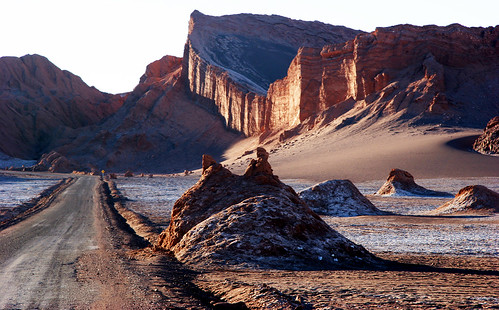
Photo by matt.hintsa
Valle de la Luna is located in the Atacama Desert in Chile. This breathtaking desert landscape is the result of centuries of winds and floods on the sand and stone of the region. The large sand dunes and stone formations mimic the surface of the moon, giving the region its name, which translates to “Valley of the Moon”. The unique color of the landscape, caused by the way the salt formations reflect the sunlight, makes the Valle de la Luna a beautiful, changing spectrum of bright blue, green, yellow and red colors.

Photo by robertpaulyoung
The Pinnacles Desert is in the Nambung National Park in Western Australia. Its unusual finger-like limestone formations among vast sand dunes create a strange, mystical appearance. With the movement of the sun, these formations cast eerie shadows across the desert. Surrounding wildflowers enhance the desert’s beauty from August to October.
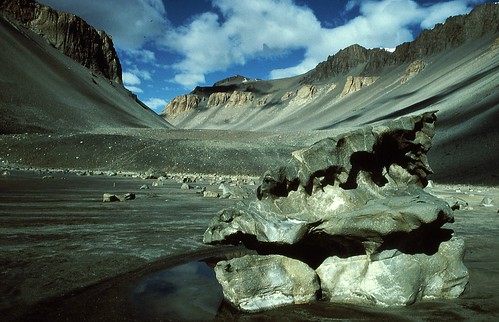
Photo by ASOC Pictures
With an annual perception of only 200 mm (8 inches) along the coast an even less inland, Antarctica is considered the largest desert on Earth. Antarctica’s most extreme desert region is the McMurdo Dry Valleys. Even though the Valleys are nestled in an ice-covered continent, they have have been ice-free for thousands of years. The harsh katabatic winds blow through the desert at speeds of up to 320 km (200 miles) per hour with a force capable of evaporating all moisture. Consequently, the McMurdo Dry Valleys are considered to be the earth’s closest equivalent to the surface of Mars.
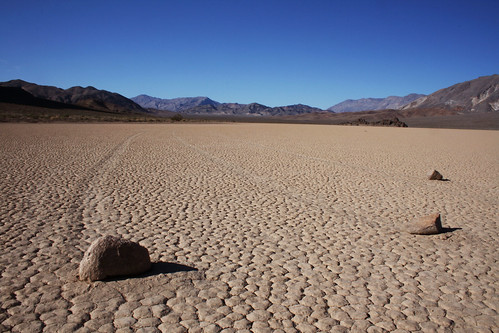
Death Valley is an imposing, diverse landscape that stretches across parts of Nevada and California. It is known as the lowest, driest, and hottest location in North America. Death Valley has recorded temperatures as high as 130 degrees. From snow-capped mountains to colorful sand dunes, the unique desert landscapes of Death Valley are like no other place in the United States. Places of interests include the scenic area of Zabriskie Point and the mysterious moving stones of Racetrack Playa.
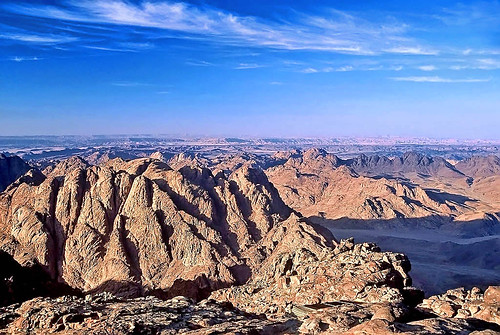
Located along Egypt’s border with Israel , the Sinai Desert is a major tourist destination due to its religious history, and it’s scenic beauty. The rugged mountain contrasting with golden sand and blue skies offer the visitor spectacular views of the desert. The Sinai Desert branches out to join the beaches of the Red Sea, where the amazing diving waters are known world-wide.
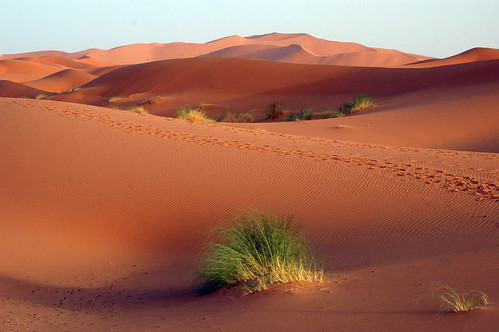
Photo by amerune
The Erg Chebbi dunes are located in the Sahara Desert in Morocco. The awe-inspiring dunes are as high as 150 meters tall, and one certainly feels small in their shadows. Excursions to the dunes normally start from the village of Merzouga which is located on the edge of the erg. Camel trekking is the most popular option although it isn’t the most comfortable way of traveling.

Photo by Jean-Louis Vandevivère
Sossusvlei is a enormous clay pan surrounded by gigantic, red sand dunes, and it is located in the Namib Desert of Namibia. The Tsauchab River flows through the desert, and its rare flooding waters the vegetation that survives in the clay soil. During sunrise and sunset, the colors of the sand dunes are constantly changing and provide an opportunity for photographers. The fierce desert winds continually alter the shape and texture of the dunes, providing an ever-changing desert landscape.

Photo by miss mass
The Nazca Desert occupies a strip along the northern Pacific coast on a high arid plateau. The famous Nazca Lines are located between the towns of Nazca and Palpa. Created between 200 BC and 700 AD the figures range from simple lines to stylized spiders, monkeys, fish, llamas, lizards and human figures. The lines were created on such a large scale that it wasn’t until the 1920’s, when Peruvian airlines started to fly from Lima to Arequipa, that the lines were recognized as figures. The dry, windless, stable climate of the Nazca Desert has helped keep the lines uncovered to the present day.
·
The Wadi Rum valley features amazing wildlife and remarkable rock formations. Located in the country ofJordan, the valley is a spectacular tourist destination. Guests can ride a camel or horse across the amazing desert and camp out under the clear, star-filled sky. Adventure-seekers can practice their rock-climbing skills on the vast rock formations including Jabal Rum, the second-highest peak in Jordan.
]
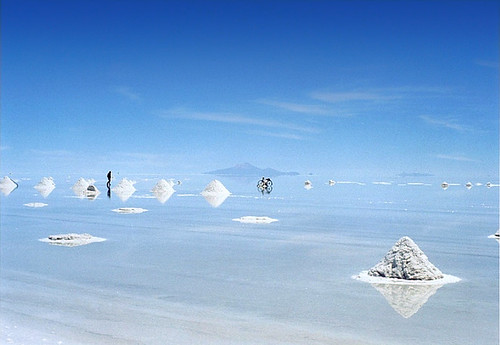
Photo by Libertinus
Located in the Andes Mountains of Bolivia, Salar de Uyuni is the largest salt flat in the world. The expanse of salt creates an unending white landscape during the dry season, but the area is most breathtaking in the rainy season when it is covered in water. The reflection of the blue sky creates an even more surreal landscape although some people insist on seeing the salt.
Wednesday, June 9, 2010
Jharkhand minerals
JADUGUDA MINES at Jharkhand are related to which of the following ?
(A)Iron
(B)Uranium
(C)Aluminum
(A)Iron
(B)Uranium
(C)Aluminum
Ans. Uranium, They are owned by Uranium Corporation of India, Ltd. (UCIL).
Jharkhand mines and minerals seem to be synonymous with the territory of Jharkhand. Jharkhand possesses a large reserve of mineral wealth within the territory: coal, iron ore, copper ore, bauxite, mica, graphite, kyanite, sillimanite, limestone, etc. form an integral part of mining industry in Jharkhand.

An estimate of the major mines and minerals of Jharkhand are as follows:
| District | Important Minerals in Jharkhand | Other Minerals |
|---|---|---|
| Deoghar, Dhanbad. | Coal | Fire Clay,Silver. |
| Garwa. | Coal | Dolomite. |
| Bokaro. | Coal | - |
| Godda. | Coal | - |
| Hazaribagh. | Coal | Fire-Clay, Feldspar, Mica, Lime stone, Stone-chips. |
| Dumka. | Coal | - |
| Sahibganj. | - | Silica Sand, Kaolin, Stone chips. |
| Giridih. | Coal | Mica. |
| Latehar, Lohardaga. | Bauxite | - |
| Gumla. | Bauxite | - |
| Palamau. | Iron Ore | Fire Clay, Graphite, Dolomite, Feldspar, Limestone, Manganese. |
| Ranchi. | - | Lime stone, Kaolin |
| Jamtara, Kodarma. | - | Mica, Stone-chips. |
| East Singhbhum. | Uranium, Copper | Quartzite, Kaolin, Gold, Silver, Fire Clay, Steatite. |
| West Singhbhum. | Iron Ore | Dolomite, Limestone, Manganese, Kyanite. |
| Sarikela Kharswan, Simdega. | - | Stone chips. |
| Pakur. | - | Stone-chips. |
Wednesday, June 2, 2010
What is the Interstellar Medium?
Simply put, the interstellar medium is the material which fills the space between the stars. Many people imagine outer space to be a complete vacuum, devoid of any material. Although the interstellar regions are more devoid of matter than any vacuum artificially created on earth, there is matter in space. These regions have very low densities and consist mainly of gas (99%) and dust. In total, approximately 15% of the visible matter in the Milky Way is composed of interstellar gas and dust.
The heliosphere is a bubble in space "blown" into the interstellar medium (the hydrogen and helium gas that permeates the galaxy) by the solar wind. Although electrically neutral atoms from interstellar space can penetrate this bubble, virtually all of the material in the heliosphere emanates from the Sun itself.
For the first ten billion kilometres of its radius, the solar wind travels at over a million kilometres per hour.As it begins to collide with the interstellar medium, it slows down before finally ceasing altogether.
The point where the solar wind slows down is the termination shock; the point where the interstellar medium and solar wind pressures balance is called the heliopause; the point where the interstellar medium, travelling in the opposite direction, slows down as it collides with the heliosphere is the bow shock.
For the first ten billion kilometres of its radius, the solar wind travels at over a million kilometres per hour.As it begins to collide with the interstellar medium, it slows down before finally ceasing altogether.
The point where the solar wind slows down is the termination shock; the point where the interstellar medium and solar wind pressures balance is called the heliopause; the point where the interstellar medium, travelling in the opposite direction, slows down as it collides with the heliosphere is the bow shock.
Tuesday, June 1, 2010
NAPCC
Quick Facts: 8 Missions of Prime Minister's Action Plan on Climate Change:National Solar Mission
National Mission for Enhanced Energy Efficiency
National Mission on Sustainable Habitat
National Water Mission
National Mission for Sustaining the Himalayan Ecosystem
National Mission for a "Green India"
National Mission for Sustainable Agriculture
National Mission on Strategic Knowledge for Climate Change
Current news
National Mission for Enhanced Energy Efficiency
National Mission on Sustainable Habitat
National Water Mission
National Mission for Sustaining the Himalayan Ecosystem
National Mission for a "Green India"
National Mission for Sustainable Agriculture
National Mission on Strategic Knowledge for Climate Change
Current news
Green India Mission draft document released, national consultation to follow
WILDLIFE PROTECTION SOCIETY OF INDIA (WPSI)
 Image via Wikipedia
Image via Wikipedia
WPSI's main aim has been to bring a new focus to the daunting task of tackling India's growing wildlife crisis. It does this by providing support and information to government authorities to combat poaching and the escalating illegal wildlife trade - particularly in wild tigers. It has now broadened its focus to deal with human-animal conflicts and provide support for research projects.
TIGER NEWS

 Twelve Tiger poachers convicted 25th May, 2010
Twelve Tiger poachers convicted 25th May, 2010
 Villagers who poisoned tiger cubs released as officials fail to file charges 19th May, 2010
Villagers who poisoned tiger cubs released as officials fail to file charges 19th May, 2010
TIGER DEATHS IN 2010 Mortality 9 Poaching & 15
Seizures
___________________
Total 24
TIGER DEATHS IN 2009 Mortality 53 Poaching & 32
Seizures___________________
Total 85
 TIGER POACHING 1994-2009
TIGER POACHING 1994-2009


 Twelve Tiger poachers convicted 25th May, 2010
Twelve Tiger poachers convicted 25th May, 2010 Villagers who poisoned tiger cubs released as officials fail to file charges 19th May, 2010
Villagers who poisoned tiger cubs released as officials fail to file charges 19th May, 2010TIGER DEATHS IN 2010 Mortality 9 Poaching & 15
Seizures
___________________
Total 24
TIGER DEATHS IN 2009 Mortality 53 Poaching & 32
Seizures___________________
Total 85
 TIGER POACHING 1994-2009
TIGER POACHING 1994-2009 Conservationists, marine researchers call for tighter control on ports 21st May, 2010
Conservationists, marine researchers call for tighter control on ports 21st May, 2010 Turtles in trouble 21st May, 2010
Turtles in trouble 21st May, 2010
Subscribe to:
Comments (Atom)




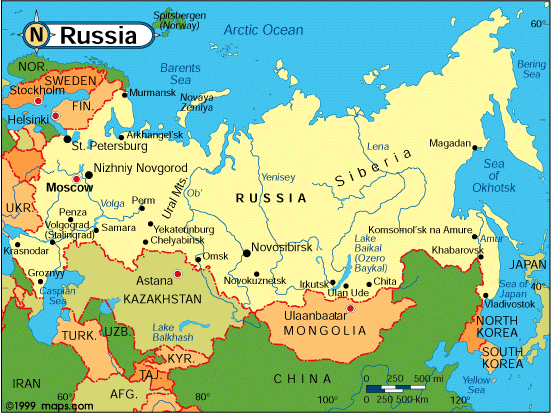





![Reblog this post [with Zemanta]](http://img.zemanta.com/reblog_e.png?x-id=0135c2ab-c917-4b42-ba87-5e487de873dc)
![Reblog this post [with Zemanta]](http://img.zemanta.com/reblog_e.png?x-id=412bff2b-f69f-4024-8077-fed44819e907)

![Reblog this post [with Zemanta]](http://img.zemanta.com/reblog_e.png?x-id=d0a8b301-3c5f-40d0-b851-a5a883a29b21)

![Reblog this post [with Zemanta]](http://img.zemanta.com/reblog_e.png?x-id=e083d900-9973-42c1-8d08-47c164d2fe54)